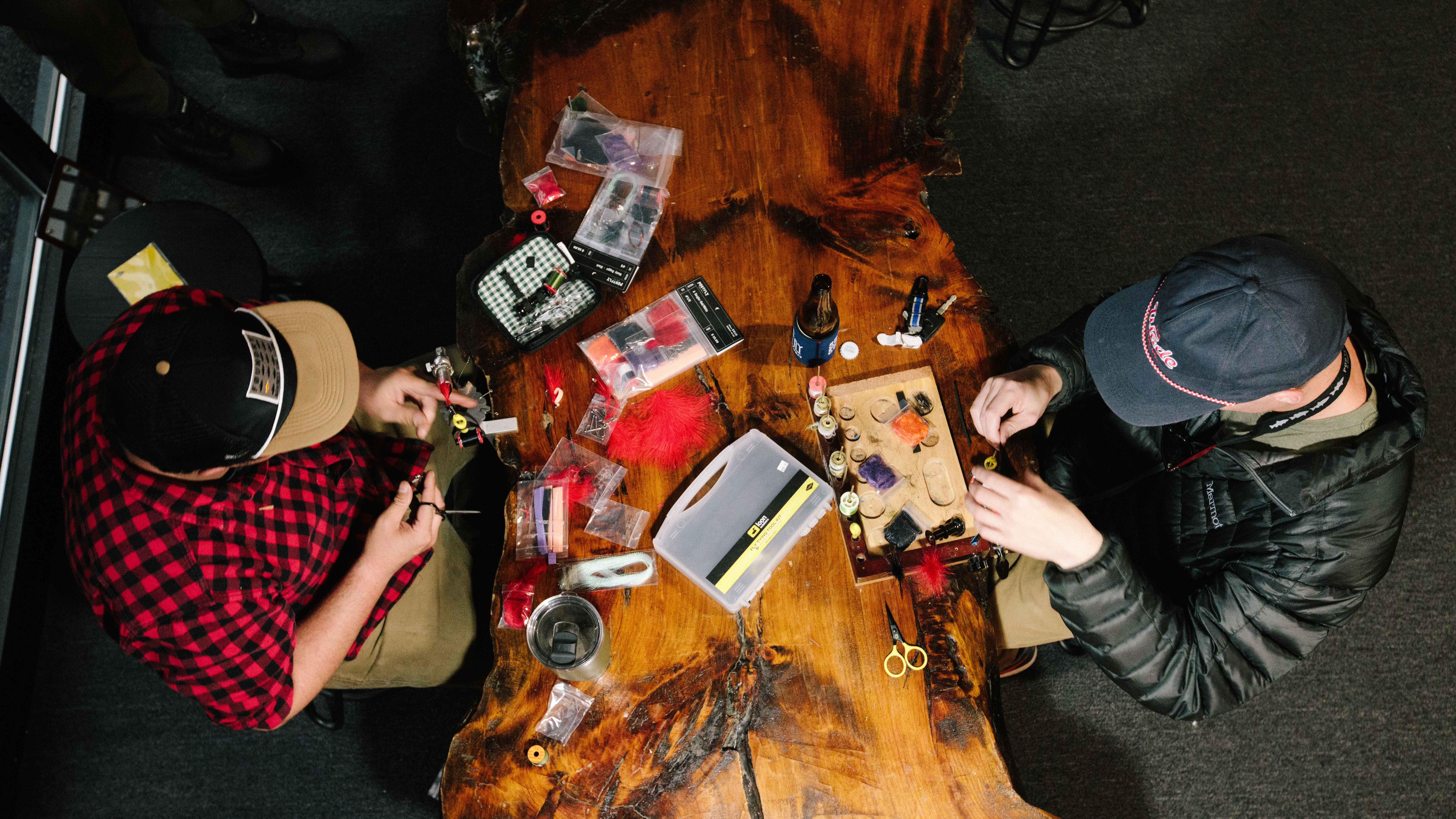We all know that for many of us, the deep cold of winter is prime-time to get to work on refilling our fly boxes or learning new patterns. The long winter nights are a perfect opportunity to pour yourself a beverage, throw on some awesome fly fishing videos and dust off your trusty vise.
Spinning Deer Hair
Spun deer hair can be one of the most useful techniques in any fly tyer’s arsenal. It creates a buoyant, bulky profile, that has many uses. You can spin and stack deer hair to create high-floating dry flies, or use it to create water-pushing heads for streamers. All you need is a patch of deer hair and a razor blade to start learning this killer skill!
Fly: The Muddler Minnow
Created in 1937, the Muddler Minnow has been a staple streamer in almost every fly angler’s box. Simple to tie this pattern is the perfect place to start when learning to spin deer hair.
Ingredients:
Hook: 3X-long nymph hook (here a Dai-Riki #710), size 10
Thread 1: Dark Brown, UTC 70 denier.
Tails: Natural mottled turkey-wing quills, matched.
Body: Gold Sparkle Braid.
Underwing: Gray squirrel tail.
Wing: Natural mottled turkey-wing quills, matched.
Thread 2: Dark Brown, UTC 140 denier.
Collar and head: Natural brown deer hair.
Tools: Double-edge razor blades
Articulating Streamers
For the past few years, articulated flies have been having a moment, especially in the streamer game. By adding a joint into your fly, the fly will have far more movement under the water, which is sometimes all thats needed to get a predatory fish to eat. It’s not a difficult skill to learn, and will open up an entirely new style of tying for you to dive into!
Fly: The Sex Dungeon
No, it’s not a basement where you keep dirty magazines, but instead it’s a deadly trout streamer pattern purpose built to entice big, aggressive trout to attack your fly. The bulky head and articulated body give this fly some incredible action under the surface, and despite its complicated appearance, isn’t that difficult to master on the vise at home!
Ingredients:
Thread: White GSP 100
Rear Hook: Daiichi 2460 #2
Tail: White Marabou
Flash in Tail: Silver Flashabou
Body: Pearl Ice Dub or UV Minnow Belly
Hackle: White Schlappen
Rib: UTC Ultra Wire (Brassie Silver)
Legs: White/Pearl Flake Barred Crazy Legs
Optional Wing: White Marabou
Connecting Wire: Articulating Wire
Parachutes for Dry Flies
This technique is for all of you “Dry or Die” folks out there. Even if you’re not tying them yourself, there is probably a good chance that a few parachute dries are in your box. Parachutes on dry flies serve 2 main purposes, first, they make it exponentially easier to see your flies floating on the surface, and second, the allow the body of the fly to sit in the surface film, perfectly emulating an insect struggling to break free of the water’s surface tension. Both of those combined make parachute-style dry flies, some of the most productive ones.
Fly: Parachute Adams
This dry is probably one of the most productive dries out there. You can tie the Adams in its traditional colors, or tweak them to match the hatches in your area. In the video above, our friend, Tim Flagler, ties a super tiny size 22, but the beauty of this pattern is that you can size it up to match your needs.
Ingredients:
Hook: Standard dry-fly hook (here, a TMC 100), size 22.
Thread: Olive, Danville Flymaster 6/0.
Tail: Brown and grizzly hackle fibers.
Wing post: White poly yarn, 1/4 strand.
Hackle: Brown and furnace hackle.
Adhesive: Zap-A-Gap.
Body: Adams gray Superfine dubbing.
Head: Tying thread.
Tools: Hackle gauge.
Reverse Tying
This one is for all of you saltwater and predator chasing anglers. Reverse tying buck tail is a perfect way to create large, bulky flies, that push water and are easy to cast. Reverse tying basically creates a hollow fly with sparse layers of buck tail and flash that come together to form a near perfect baitfish profile in the water.
Fly:Bob Popovics Hollow Fleye
The video above shows the OG hollow fly pattern developed by Mr. Bob Popovics, a legendary Striped Bass fly angler from the New Jersey coast. Bob developed this fly to be as larger as possible while reducing the weight of the fly. and since its creation has become a staple pattern for anglers looking to fool large, predatory fish in both salt and freshwater!

Dan Zazworsky’s passion is sharing his love of fly fishing with anyone that will listen, read or watch. You can find him exploring new waters every day while chasing any fish that will eat a fly!






Another great post. I just shared it to my facebook page. Do you have an instagram page?
Yes we do! Follow along at @postflyinc on Instagram!
Yes, we do! Follow along at @postflyinc on Instagram!
That was one of the best instruction video’s I have seen. I wish I had seen the others in relation to Deer hair.